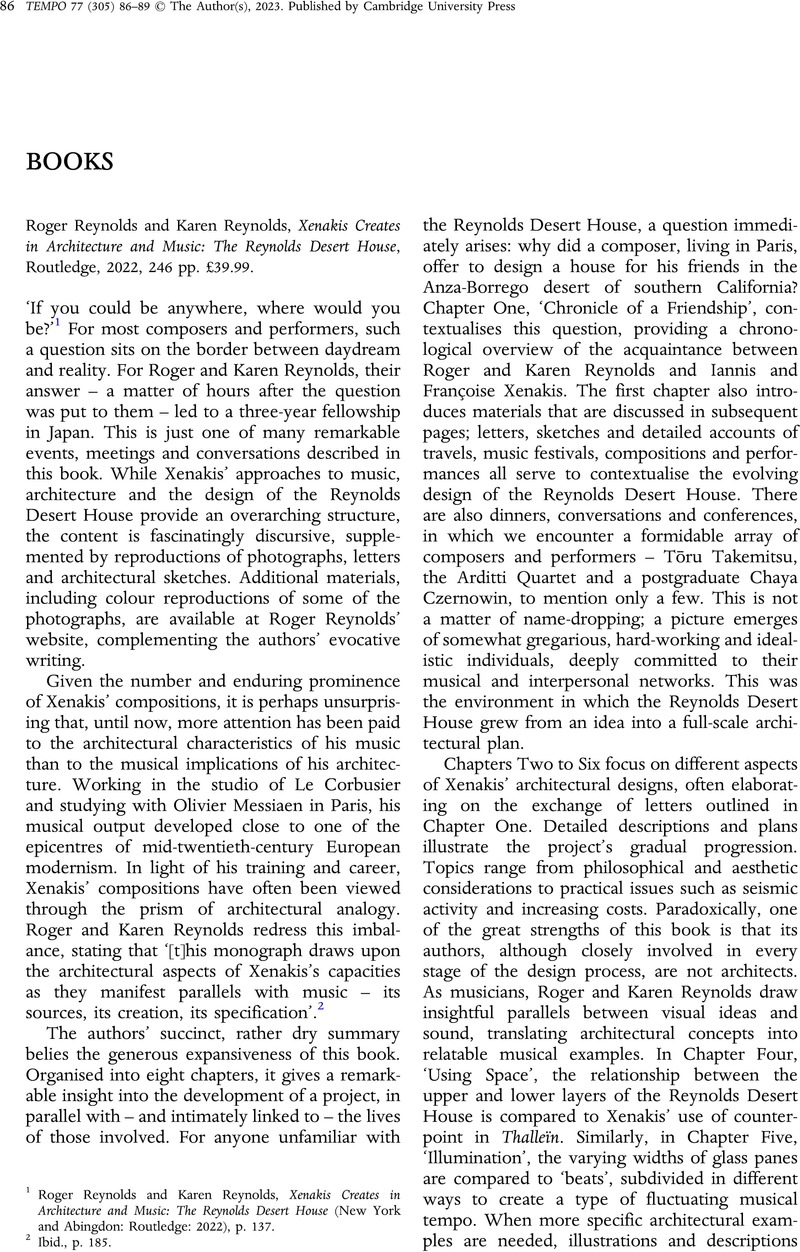No CrossRef data available.
Article contents
Roger Reynolds and Karen Reynolds, Xenakis Creates in Architecture and Music: The Reynolds Desert House, Routledge, 2022, 246 pp. £39.99.
Review products
Roger Reynolds and Karen Reynolds, Xenakis Creates in Architecture and Music: The Reynolds Desert House, Routledge, 2022, 246 pp. £39.99.
Published online by Cambridge University Press: 12 July 2023
Abstract
An abstract is not available for this content so a preview has been provided. Please use the Get access link above for information on how to access this content.

- Type
- BOOKS
- Information
- Copyright
- Copyright © The Author(s), 2023. Published by Cambridge University Press
References
1 Reynolds, Roger and Reynolds, Karen, Xenakis Creates in Architecture and Music: The Reynolds Desert House (New York and Abingdon: Routledge: 2022), p. 137Google Scholar.
2 Ibid., p. 185.
3 Ibid., p. 188.



